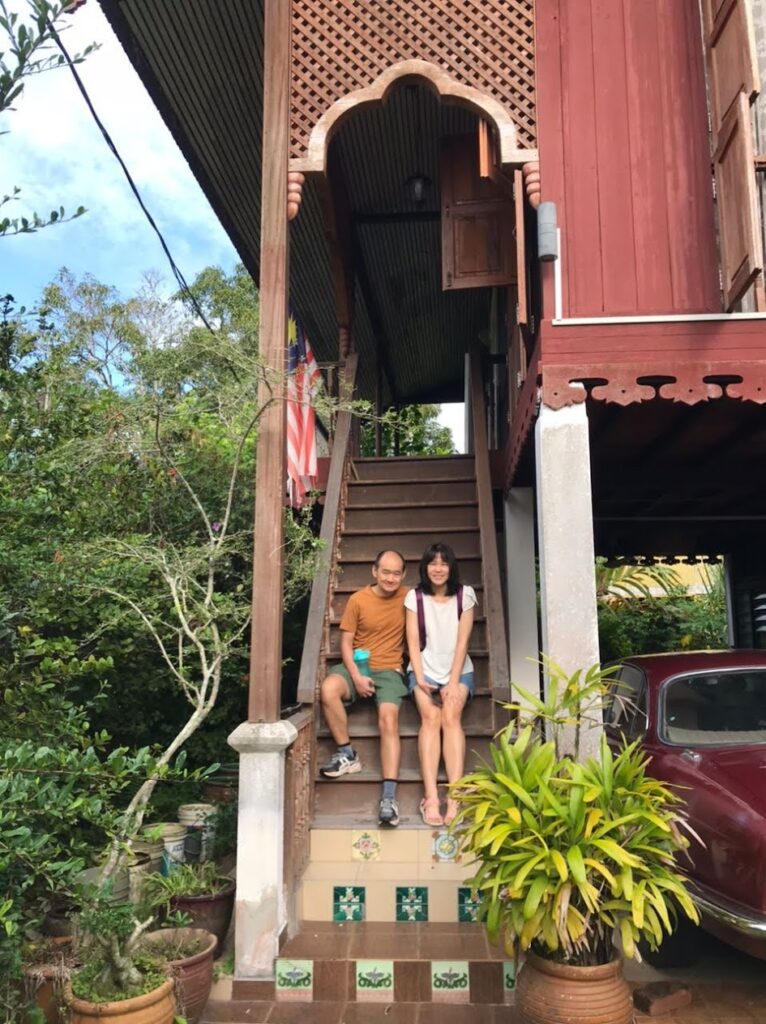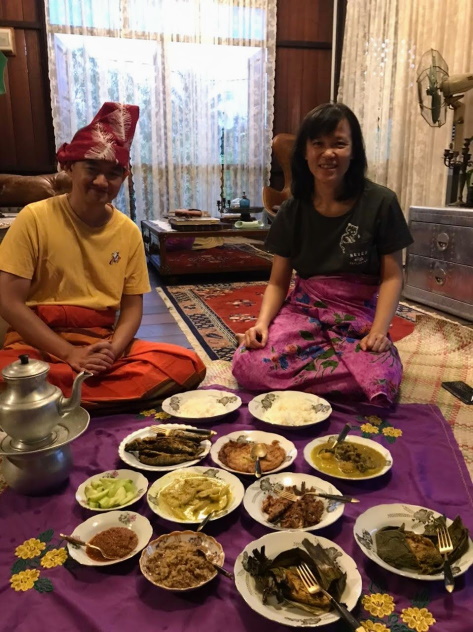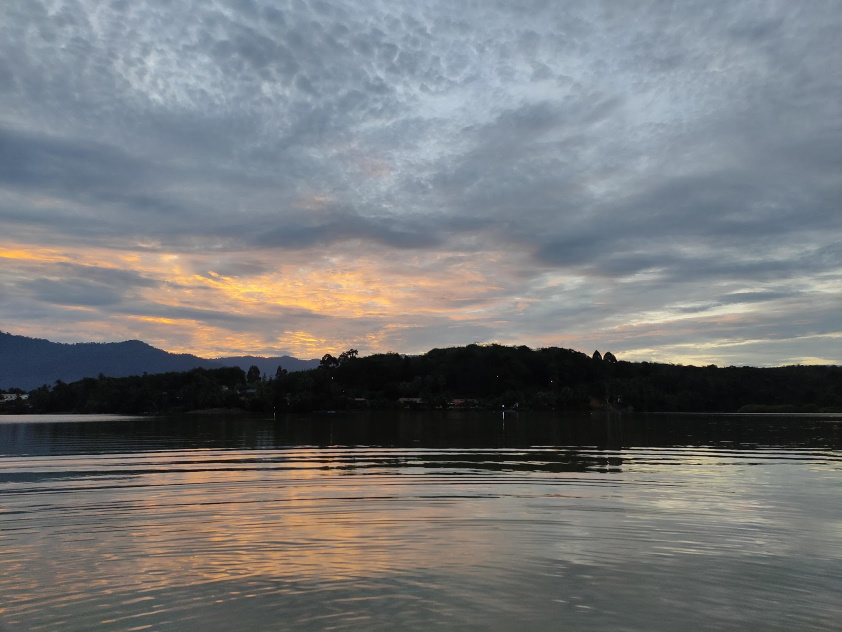
I never write about my travel trips anymore as I don’t go anywhere that millions of other people haven’t already been and I have no particular insights of my own to add to what everyone else has to say. Plus I don’t care about photography enough to take much effort with them so I don’t even have pretty pictures to show everyone. Still my recent trip to Lenggong, Perak right here in Malaysia was such an eye-opener that it merits making an exception. The phrase “underappreciated gem” is clichéd and overused but if ever a place deserves to be called that, this is surely it.
Like everyone else in Malaysia, my wife and I were stuck at home throughout the pandemic lockdown. As it eased, we took the opportunity to venture out first to places we’ve never been before within our own state of Negeri Sembilan and then gradually the rest of Malaysia. We will probably resume travels out of the country only next year. I’d thought this was another such trip, driven by my wife’s desire to visit the site of the famous Perak Man archeological find for her own writing projects and other locations of interest nearby. Apparently the sites are considered sensitive or restricted enough that visiting them requires asking for specific permission from the government but approval wasn’t difficult to obtain. We would also need a knowledgeable local guide as there is no question of us being allowed to tramp through the jungle and the many caves on our own, After some back and forth, we settled on Nasir Jalaludin, aka Nash, as both our guide and our host as we would be staying in his traditional Malay house, set up as a homestay called Rumah Tiang 16.
I’d said this post was about Lenggong, but it’s a story that is inseparable from the infectious passion that Nash has for his hometown and his boundless enthusiasm for elevating its status in the eyes of the world. As I’ve observed across many of the posts I’ve made about films here, some of my favorite ones are made by directors who are so passionate, so obsessed really, about particular places or subjects, that their intensity bleeds into the film, turning them into singular pieces of art. The Chinese director Bi Gan is my go-to example. His love for his native city of Kaili suffuses every frame of his films so strongly that what is really a rather unremarkable place in China is transformed into almost a place out of myth. Another example would be American director Kelly Reichardt whose films gain authenticity from her deep knowledge and love for the state of Oregon in the US. In a same way, Nash seems to be dedicated to promoting Lenggong, and with a laser-like focus, has educated himself of everything of note that has to do with the town. Whether it is its history, its people and their customs, their architecture and their food, the flora and fauna, the geography and geology, there is no question that he seemingly cannot answer, so long as it is about Lenggong. This domain-specific expertise and his own enthusiasm in sharing it, makes him an ideal ambassador for his hometown and it is also what turns what I thought would be just another short domestic excursion into an extraordinary experience.
Lenggong is a small town, pleasant enough as most such towns are in Perak with good views of forested mountains and hills. If one happened to be driving through, it would most likely be on route 76. Crossing the Raja Muda Nazrin Bridge, one might be curious about a large body of water but as the concrete barriers on both sides of the bridge are too tall, it is unlikely that one will be able to see much and so might pass through the town without much fanfare at all. To enter the town proper, one must use the older road that runs roughly parallel. You might then note the unusual vibrancy of such a small community, observe that you are actually in a narrow valley hemmed in by mountain ranges on both sides, and finally be able to appreciate the beauty of the body of water, Tasik Chenderoh that is dotted with numerous small islands. A particularly intrepid traveler might well discover all that on his own, but it takes a local to know when exactly one ought to be arrive at some particular spot for the best view of the lake or to go around the other side to point out a hill that is known as Bukit Bunuh due to it being used as an execution ground by Communists during the Emergency. The hill’s peculiarly even shape is due to it being the epicenter of a meteor impact that took place 1.83 million years ago. Venture into the palm oil plantation that covers the hill and one can find evidence of that ancient impact in the form of suevite rock formations. That’s just a small taste of the richness that one can find with proper guidance in what seems like an ordinary town.
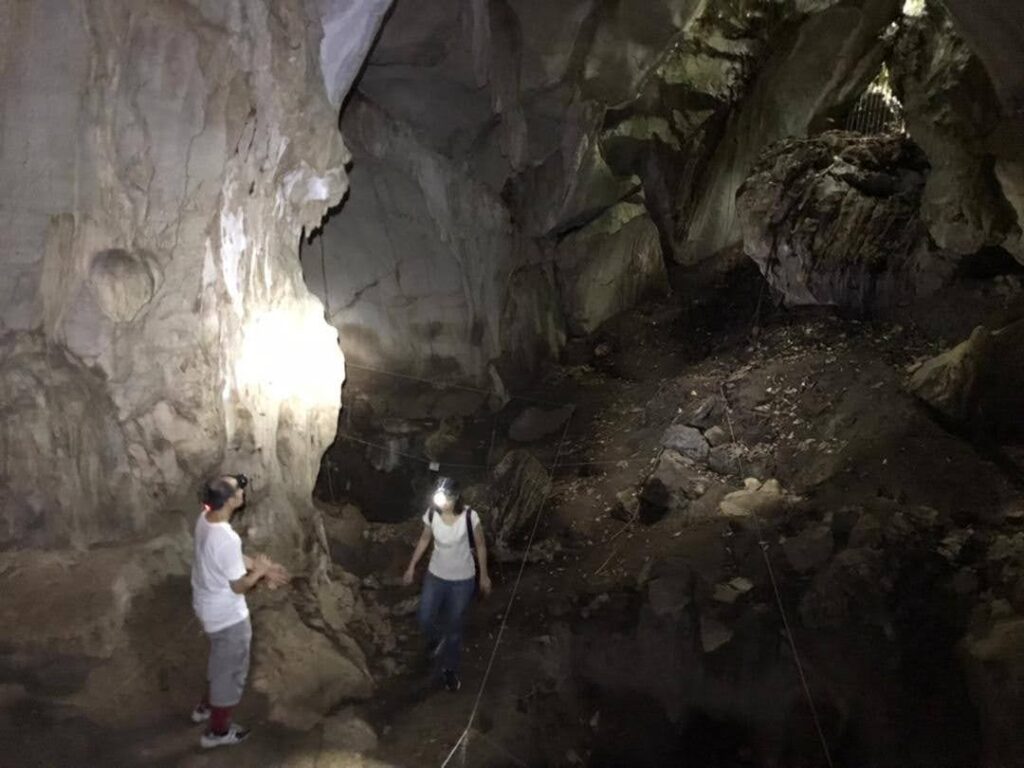
We were really there however for the archaeological sites where the discoveries made were deemed significant enough to have Lenggong Valley be listed as a UNESCO World Heritage site. The crown jewel is the so-called Perak Man, the oldest human skeleton found in Malaysia which dates to around 11,000 years. Our itinerary took us to four caves some of which required some hiking through the jungle to get to though it wasn’t very strenuous even if we had a misadventure with leeches. To tell the truth there isn’t actually much to see in the caves themselves. To appreciate them one needs to know what was found in them, possess some sense of the time scales involved and exercise your own imagination to picture the prehistoric people going about their lives in the same spaces you are standing in before the advent of human civilization. Yet this isn’t that different from some of the ruins we’ve been to in, say, Greece where some sites have barely anything left and we need to imagine the cities that once stood there. As an avid reader of science-fiction and fantasy, I loved the experience as a visceral affirmation of how there is so much more to the world than what we see around us in the present day. I also have to admit that there is a vicarious thrill in visiting sites that are still of active interest to archaeologists and that are not quite fully open to the general public.
The artifacts recovered from these sites have been moved to a gallery in the valley but it was closed for renovation during our visit. Nash took us a temporary gallery which houses a reproduction of Perak Man and photographs of the other artifacts but it will probably be worth our while to return once the permanent gallery reopens. We also visited a number of other sites that are interesting for geological reasons including a wall of hardened ash that are the remnants of the Toba supervolcano eruption 75,000 years ago. Personally I was more intrigued by the blue water of the strange well in Kampung Chepor. The unusual chemical composition of the water and its constant temperature and water level suggests that it is linked to some vast underground aquifer. The fact that the odor of the water changes in response to volcanic activity in Indonesia hints at the vastness and complexity of the underground connections. I like to think that I am scientifically literate and well-informed but I learned plenty from this and it is especially satisfying to be able to visit sites and touch and handle objects from there that are of scientific interest.
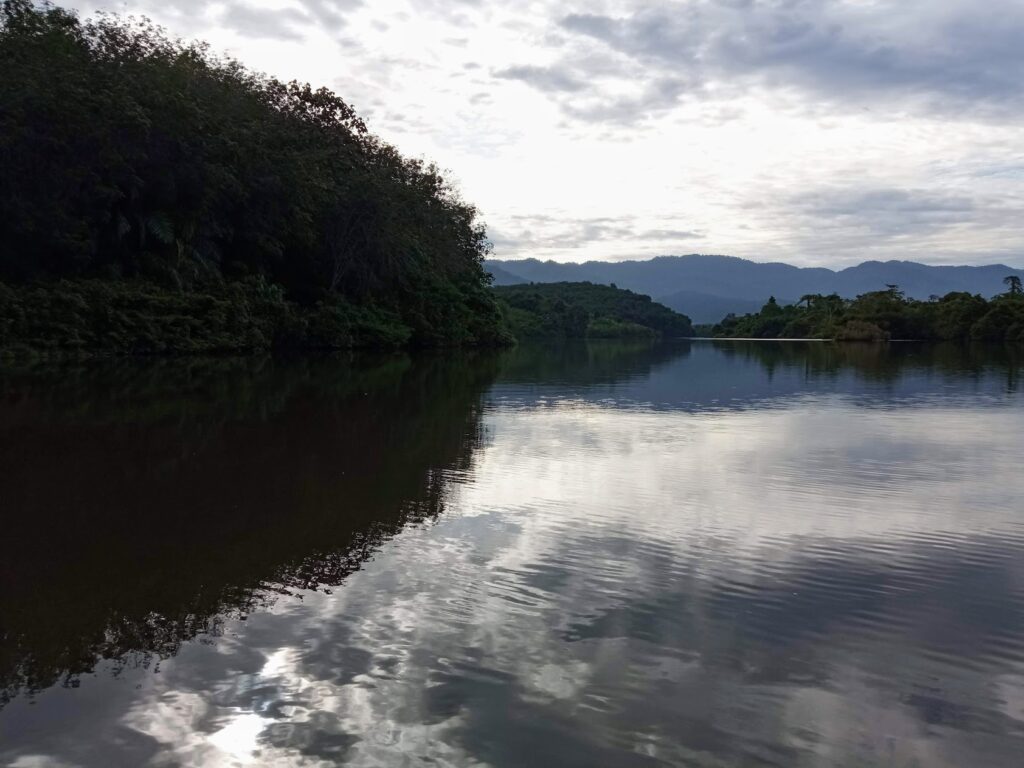
As we discussed with Nash, it is regrettable that most Malaysians probably aren’t aware of Lenggong’s UNESCO listing, yet it is difficult to imagine that the general public would be much interested in caves and rocks even if they did know. On the other hand, after experiencing the late afternoon boat ride on Tasik Chenderoh and the connecting Perak River, it is hard to imagine who would not be won over by its beauty and tranquility. I don’t much care for tourist spots promoting themselves as filming locations for famous movies but in this instance, one only has to take one look to understand why the producers picked the place. The boat ride took a leisurely two hours and every moment of it was magical even as we passed back and forth through the same areas. Here Nash leveraged not just his own knowledge of the lake but that of the boatman who learned to replicate bird calls to trick them into coming closer. Who else but a local would know that the underneath of the large concrete bridge I mentioned earlier makes for a good place to play with echoes? Or how about picking just the right spot on the lake to watch the sunset, taking into account the current direction of the sun? Many domestic tourist attractions are marketed as being Malaysian versions of more famous places and they are invariably disappointing. I can say without exaggeration a boat ride on Tasik Chenderoh at the right time is a world-class attraction and doesn’t need to take second place to anywhere else on Earth.
Being hosted in Nash’s Rumah Tiang 16 is meant to be an immersive cultural experience. This includes staying in a traditional Malay house, which feels very authentic but is perhaps is a little lacking in creature comforts, being taught some Malay customs and manner of dress and so forth. I don’t really like the theatricality of such presentations but Nash is very earnest and I think his sense of professionalism from a long career in the hospitality industry really shines through. Particularly impressive are the meals provided, mostly examples of the local Malay cuisine. I’m not a foodie but even I can tell how unique this cooking is, with a particular emphasis on the river fish of the area, and everything is delicious. What’s more is that almost none were dishes I’ve seen anywhere else and apparently no Malay restaurant regularly serves this kind of cuisine. Honestly eating lunch in a hut on a small farm right on the edge of the jungle is a five-star experience that the best hotels and resorts in the world would struggle to match. More than the food however, for me it was the interactions with the local people as a result of these encounters that most intrigued me.
Hospitable is another overused adjective so I will try to be more specific. Even as my wife asked after the nature of each dish, the villagers were just as curious about the nature of these city folk coming here to try their cooking (and even pay for it!) They were anxious as to whether or not we really liked their food and worried over us not eating enough. Any questions about the many things that they had growing on their farm seemed to delight them and they had some amazing stories to tell such as one about the herd of elephants that would come by their property about once a year and inevitably do some damage. Out on the lake, we encountered a mak cik on another boat who offered us a durian without any expectation of payment. This is seemingly such a natural way of interacting with people in a small community where so many know each other that hospitable really doesn’t feel like the right word.
Though I never mentioned this during the trip, I also couldn’t help but notice that Lenggong is effectively an UMNO stronghold. The house of the boatman we used proudly displays a label declaring support for BN while we can see the UMNO branch office and the sitting MP’s office to assist his constituency opposite each other on the main street of the town. To us urban Malaysians, and perhaps especially Chinese Malaysians, UMNO is the bogeyman and it can be difficult to understand who would still vote for an irredeemably corrupt party. Yet looking at Lenggong, it is easier to see why: because they are the party that is there on the ground and in their lives. I am reminded that UMNO is a huge institution and parts of it can do good even if the organization as a whole is rotten. Nash is disappointed that the government hasn’t done more to promote Lenggong. But I was actually surprised by how much has already been done. Even though the main gallery was closed, it looks quite good from the outside and must represent a significant investment. The town’s infrastructure and public amenities seem well maintained and the town as a whole seems really clean. There are many piers scattered all along the waterways and someone must be maintaining them. The visit ended up raising my estimation of the work that the government does carry out but isn’t that well publicized.

As we all know, people now love to share photos of the beautiful places they visited on social media. But that practice too has provoked a counter-reaction. In the comments you will often see someone castigating the poster for spoiling a particularly beautiful spot by making it too popular and well-known. Nash is insistent on popularizing Lenggong so I’ll defer to his judgment but I’m confident that our trip could not have been as amazing as it was if it regularly attracted large crowds from outside. The boat ride on the lake for example could not have been as magical if the waterways were clogged by tourist boats and large crowds bring rubbish everywhere else in Malaysia and so Lenggong can hardly expect to avoid this fate. Tourism also brings in such large amounts of money that it will inevitably change the character of the town and the people who live in it. But that is a future that still seems some way off and personally I am always in favor of the rural population benefiting more from economic development.
As I write this, Lenggong seems poised to become a major destination for tourism with influencers, the mass media and tour agencies taking greater notice of it. If that’s true, it feels like my wife and I visited at a particularly fortuitous time. Late enough that the scientific importance of the multiple sites in the vicinity have been discovered and understood, and for people like Nash to have developed a solid itinerary of attractions complete with working out a suitable menu of local cuisine. Yet early enough that everywhere we went, we were pretty much the only tourists on the scene. The intensity of our experience was heightened immeasurably by this serenity and sense of exclusion. It was also fascinating to gain a little insight on how tourist destinations blow up as you need people like Nash working hard to promote the place, create enough of a buzz and eventually get the government to stump up more money for better facilities and so on. This trip was highly educational in so many different ways.
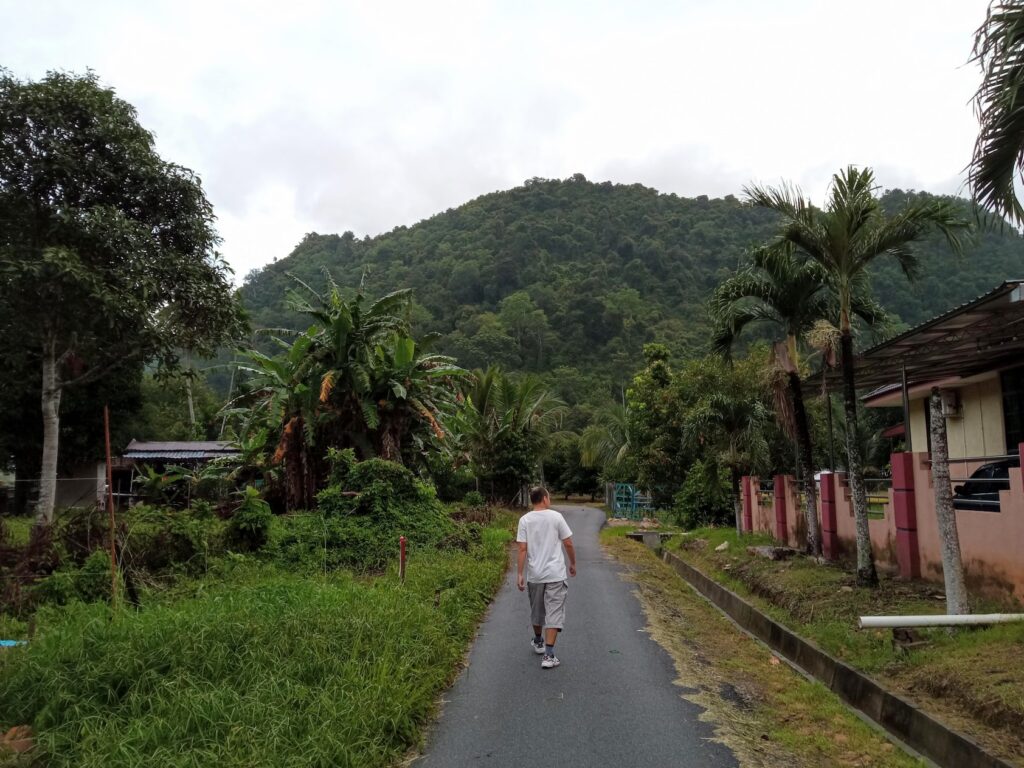
Even if the small town will inevitably change as it becomes better known, Lenggong surely deserves to be on the radar of travelers. It has the requisite natural beauty, it has history and it has the small town vibes that make it an outstanding weekend getaway. It feels wrong that so many Malaysians probably know far more about the ancient history of other countries than their own or don’t even realize that interesting archaeological and geological research is being done in Malaysia at all. It’s an ideal destination for culture tourists and even for those less scholarly-inclined, it’s right off of a major highway, and so makes for a perfect stop for those on the way to somewhere else. Hurry though as you might want to go before it gets too famous. Thanks again to Nash for his invaluable service in creating one of the most memorable tourist experiences we’ve ever had.
